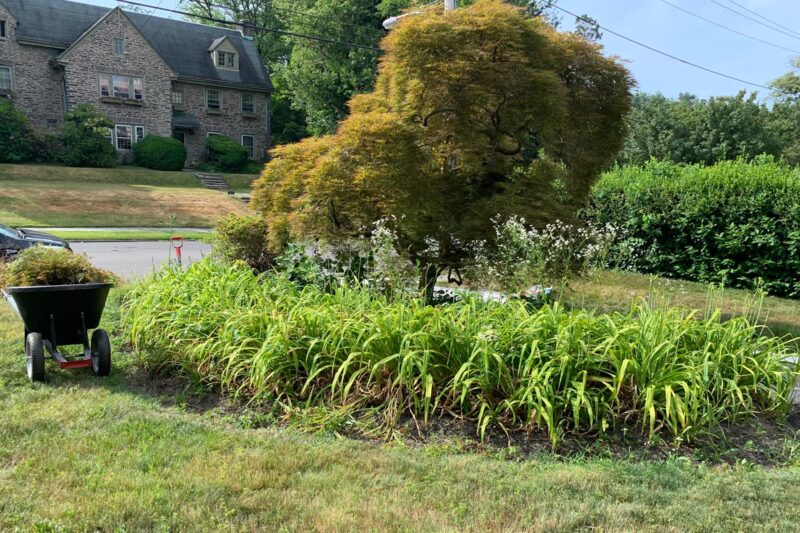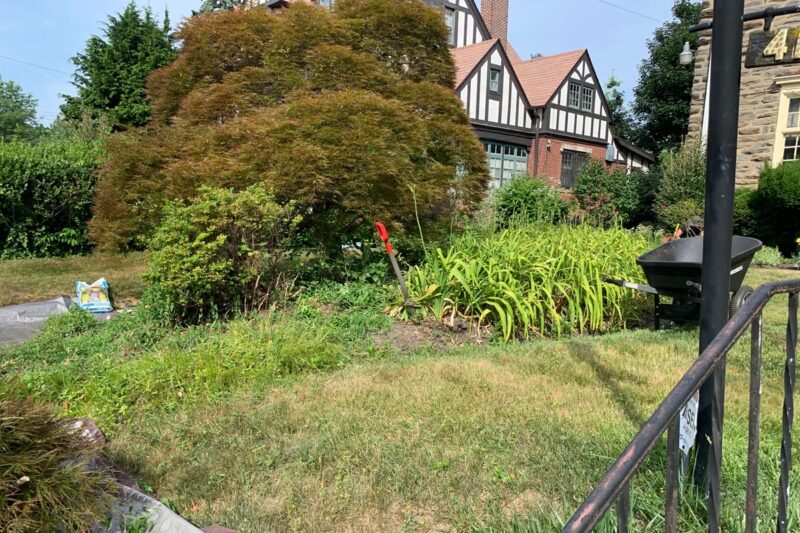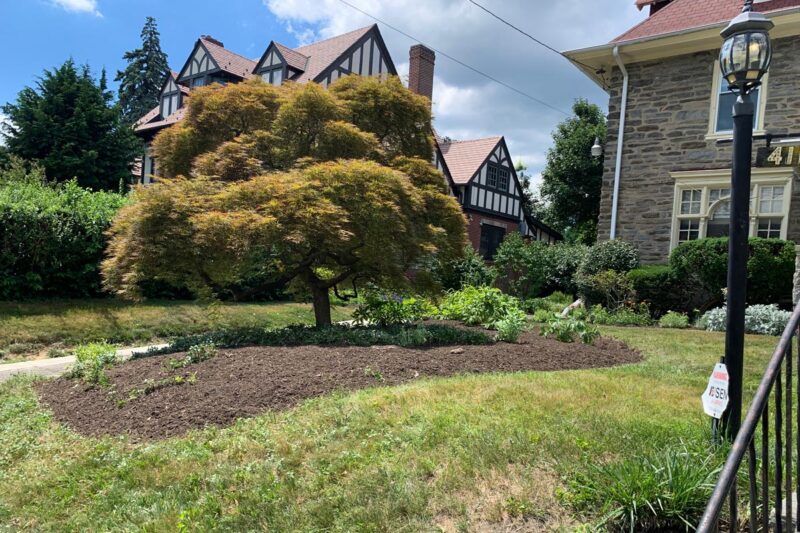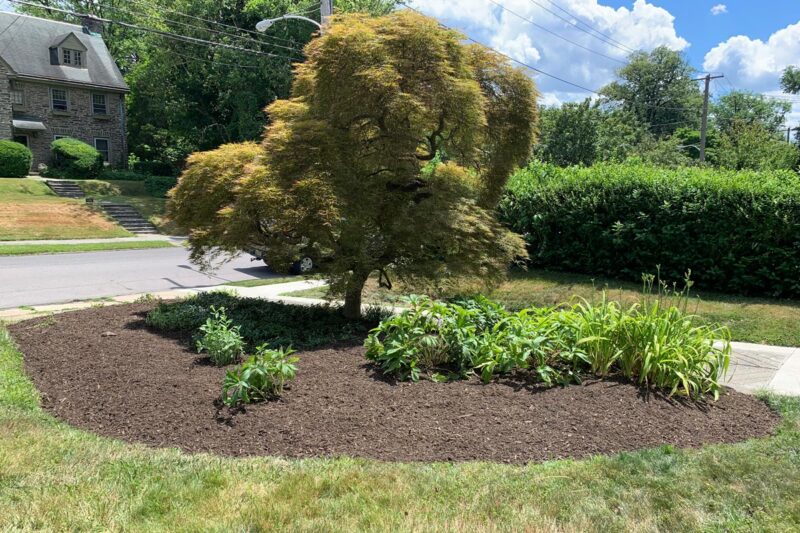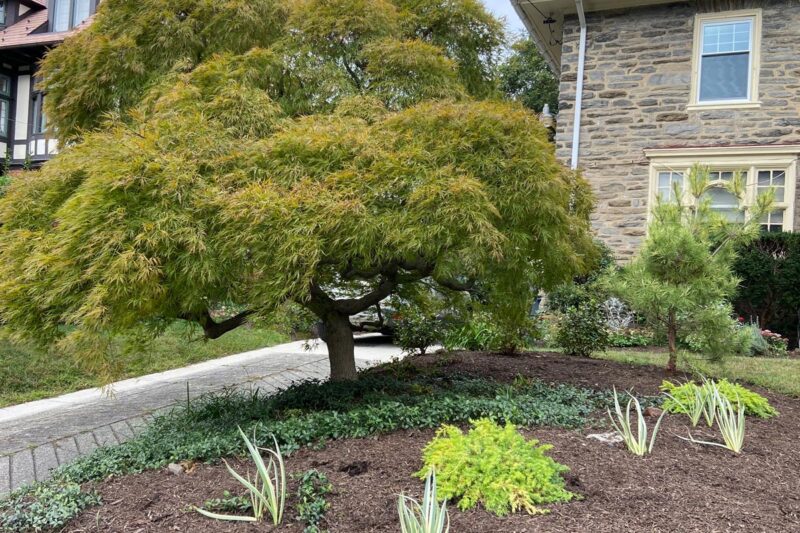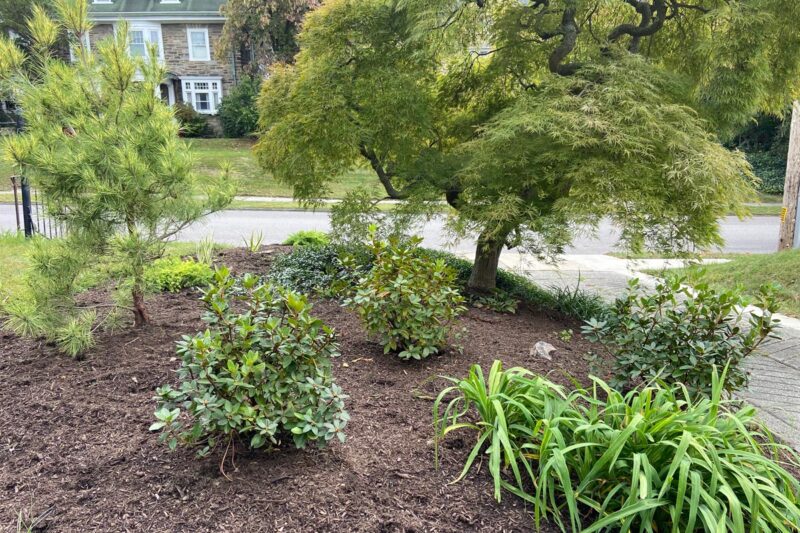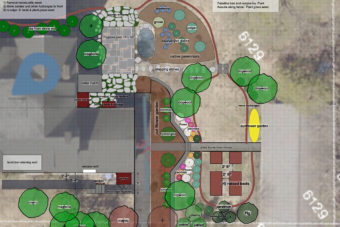When it comes to landscape design, one of the greatest challenges — and opportunities — lies in integrating new elements with existing features. Take, for example, the weedy, overgrown mess that has taken root beneath your beautiful Japanese maple. Rather than seeing this area as a problem, consider it a blank canvas waiting for a new creative touch. Here’s how Garden InSites transforms a chaotic patch into a cohesive part of your garden.
Integrating a new landscape beneath your Japanese maple may seem daunting, but with thoughtful planning and creativity, it can become a beautiful and harmonious extension of your garden. By assessing the existing features, choosing complementary plants, and revealing it’s structure, you’ll not only enhance the beauty of the maple but also create a vibrant, cohesive landscape that reflects your personal style. Embrace the art of integration, and watch your garden flourish!
Our process spans multiple seasons:
When faced with the task of integrating a new landscape beneath this beautiful Japanese maple, the journey will take multiple seasons. This process not only transforms the space but also enhances the harmony of your garden and ensures the health of your plants. Here’s a detailed look at how we approach this integration, focusing on both care and creativity.
Phase 1: Preparation and Clearing
Weed Removal
Our first step is to remove the weeds and any unwanted plants that have overtaken the area. This isn’t just about clearing out the mess; it’s an opportunity to evaluate what might work in the new design. We encourage clients to consider leaving certain plants that complement the envisioned aesthetic or relocating them to a more suitable spot in their landscape.
Pruning
As part of the preparation, we focus on selective pruning. For example, pruning the low-hanging or dead branches of a Japanese Maple not only rejuvenates the tree but also allows for the seamless integration of new plantings underneath. This step promotes better airflow, light penetration, and a tidier appearance, ensuring harmony between the old and new elements.
Compost and Rest
Once the area is cleared, we add a layer of composted mulch. This enriches the soil and helps suppress any lingering weeds. We recommend letting this sit for a minimum of six weeks, as this allows the mulch to settle and the soil to begin to rejuvenate. During this time, it’s common for some weeds to reemerge, necessitating another round of removal before we move forward.
Phase 2: Client Involvement and Design Consultation
Site Walk-through
After we have a blank canvas, we revisit the site with the client for a detailed walk-through. During this time, we discuss options such as style, scale, and color, ensuring that the design aligns with their vision. We also explore any favorite plants they want to include.
Addressing Challenges
A critical aspect of our conversation involves the newly acknowledged presence of deer in the area. We work together to identify deer-resistant plants that will not only thrive but also contribute to the overall aesthetic of the garden.
Nursery Visit
We believe in a collaborative approach, here we invite the client to join us on a visit to the nursery. This allows them to help choose plants that resonate with their style and preferences, making the design more personal and meaningful.
Phase 3: Planting Strategy
Two-Phase Planting Approach
To ensure the best results, we decide to plant in two phases: Autumn and Spring.
Autumn Planting: Fall is an excellent time for planting shrubs and trees because the cooler temperatures allow plants to establish their roots without the stress of summer heat.
Spring Planting: In the spring, we’ll add additional layers to the landscape, incorporating flowering plants and ground cover that will thrive as the temperatures warm up. This phased approach not only allows us to observe how the initial plantings settle in but also creates a dynamic, evolving landscape.
Integrating a new landscape beneath an existing feature like a Japanese maple is a rewarding process that unfolds over multiple seasons. By starting with careful preparation, engaging in thoughtful client discussions, and implementing a phased planting strategy, we can create a cohesive and vibrant garden that beautifully complements its surroundings. With patience and creativity, the once-overgrown space evolves into a stunning focal point, offering enjoyment for both you and passersby alike.
Choosing Complementary Plants
Integrating a new landscape beneath a stunning Japanese maple is not just about plant selection; it’s about creating a harmonious environment that enhances the existing beauty. During our recent visit to the nursery, we discovered a unique Japanese Dragon’s Eye Pine with variegated needles — bands of yellow alternating with green. This striking specimen inspired our selection of additional plants, focusing on colorful foliage for winter interest while maintaining a minimal floral display so as not to overshadow the maple.
In our design, we prioritized plants that would enhance the landscape without detracting from the Japanese maple. Here’s a closer look at the selections we made for Fall planting:
Japanese Dragon’s Eye Pine: This stunning pine serves as a focal point, with its unique variegated needles adding texture and color throughout the seasons.
Iris pallida variegata: Known for its beautiful striped foliage, this plant will provide vertical interest and a subtle floral display in spring, perfectly complementing the maple.
Gold Rug Juniper: This low-growing ground cover not only adds a splash of golden color but also helps control erosion and create a soft transition to other areas of the landscape.
PJM Rhododendron: With bay-scented leaves that deer typically avoid, this shrub is an excellent choice. Its evergreen nature ensures year-round interest while its delicate blooms in spring offer just the right amount of floral accent.
Additional Selections for Cohesion
To further enhance the landscape and maintain a cohesive look, this Fall we also selected:
Junipers for the Driveway Planting: These hardy plants will provide structure and greenery along the driveway, creating a welcoming entrance while being resilient to local conditions.
Gold Mound Spirea: This vibrant shrub complements the Crape Myrtle and dark-leafed cherry laurel, adding a burst of color that harmonizes with the overall design.
Creating a Harmonious Landscape
This Fall we begin the design by selecting plants with interesting and colorful foliage, ensuring that the landscape remains engaging throughout the winter months. Our goal is to create a garden that honors the beauty of the Japanese maple while offering a diverse and visually appealing backdrop.
The integration of new plants beneath your Japanese maple, inspired by the Japanese Dragon’s Eye Pine, showcases our commitment to creating a cohesive and beautiful landscape. With selections like Iris pallida variegata, Gold Rug Juniper, and PJM Rhododendron, we’re establishing a vibrant plant palette that offers year-round interest while harmonizing with the existing features. This marks the beginning of your transformed outdoor space, perfectly prepped for Spring planting next year.

